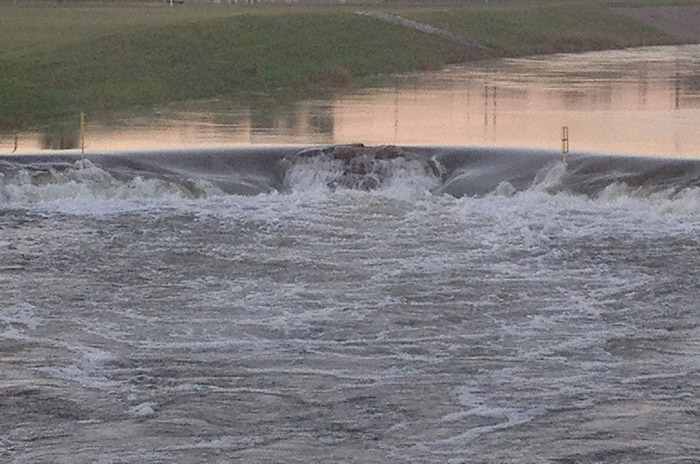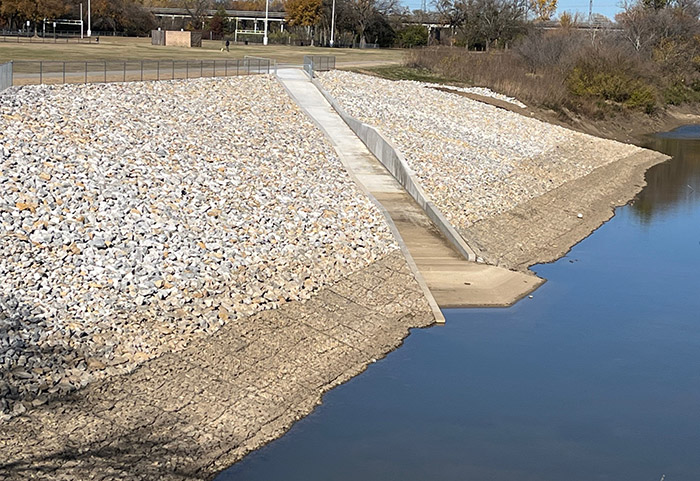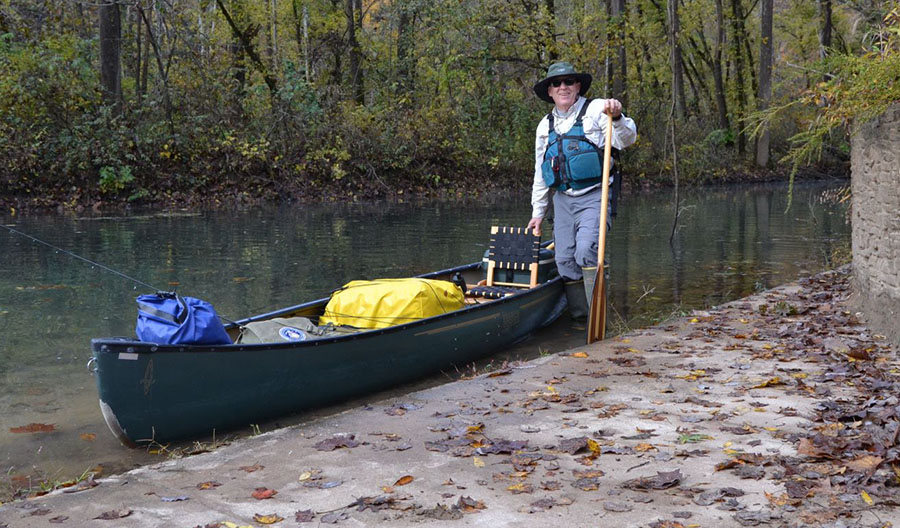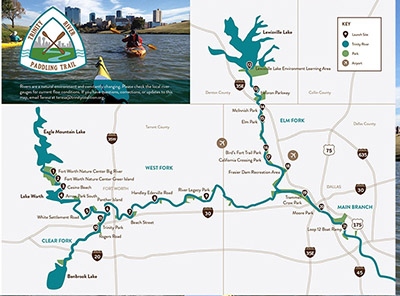Paddling on high water can be fun, but high, moving water is extremely dangerous and should be avoided by anyone who has not had specialized white-water training. Of course, sometimes you end up on moving water when you thought you were paddling in a safe place. Here are a few safety tips that can help you survive the experience:
- Never go out on the water without wearing a properly fitted life vest (PFD). Having a vest in your boat is not good enough. It may satisfy the legal requirements, but it will do nothing for you if you get into trouble. The vest has to be securely fastened on your body beforeyou hit the water or it is useless—kind of like trying to put on a bullet-proof vest after you’ve been shot. This is especially true on high or moving water.
- Never paddle alone. On any kind of water you are safest when there are at least two people. A two-man rescue takes very little time and effort. Self rescues are much more difficult and, in some cases, impossible. Be certain to practice your rescue techniques on calm water.
- Leave a float plan. Make sure someone outside of your paddling group knows where you are going, what route you plan to paddle, and when you are coming back. There are people who have survived a mishap only to be lost because no one knew to look for them. When paddling in urban areas, carry your cell phone. When calling 911, give GPS coordinates for your location rather than boat launch sites. This will allow local rescuers to find the best route to you.
- If you find yourself on moving water and realize you need to get off, look for an eddy—an area of calm water usually downstream from an obstacle like a rock or a tree. Once you are in the eddy, you should be able to paddle to shore, or at least remain stable until someone can help you. Do not try to paddle directly against the current to get back you your launch point unless it is a mild current or you are a very strong paddler.
- If you hit a rock or a tree lean towards the obstacle, not away. Leaning away from an obstacle allows the current to grab your boat and capsize it.
- Avoid strainers. These are trees, fences, or other obstructions in the water porous enough to allow water through—but not boats or people. When water levels rise, the trees lining the bank that normally stand above water level often become strainers as the water rises over their lowest branches. If you do get carried into a strainer, grab the obstruction and climb as quickly as you can to clear the water. Do not try to stay with your boat. The current will most likely pin your boat under the obstruction. It will pin you in it if you do not climb out before it is too late.
- If you find yourself out of your boat in moving water, hang on to your paddle and avoid putting your feet down. Instead, roll onto your back and pick your feet up so that you can see your toes above the water. Then swim to safety using your feet to push you clear of any rocks or dangers and your paddle to pull you forward. Do not put your feet down until you are in very shallow and quiet water. Rocks and other obstruction can trap your feet underwater. If this happens the force of the water can push you under the surface with enough force that you are unable to free yourself.
- Avoid dams and spillways—especially low head dams. These are dangerous at any level, but especially at higher flows. Water flowing over low head dams creates a circular hydraulic that can pull even large boats and paddlers under and trap them within the circulation. If you are near a dam or spillway, stay far enough back to avoid the boil line—the line of turbulence out in front of the dam. Just avoiding the dam itself will not guarantee your safety.
- It is always a good idea to carry a "throw bag" to assist in rescues if someone is out of their boat and needs help getting to shore. But if you get a throw bag, practice throwing it and repacking it correctly. Throw bag rope, with a carabiner clip, can also be used to assist in steep bank descents and in pulling boats up the bank.
If you really want to paddle high fast water, take a class from an ACA (American Canoe Association) instructor. An ACA instructor can help you develop the skills and knowledge to turn moving water from a deadly danger into an enjoyable sport.
Teresa Patterson
ACA Certified Instructor
Trinity River Paddling Trail Manager





